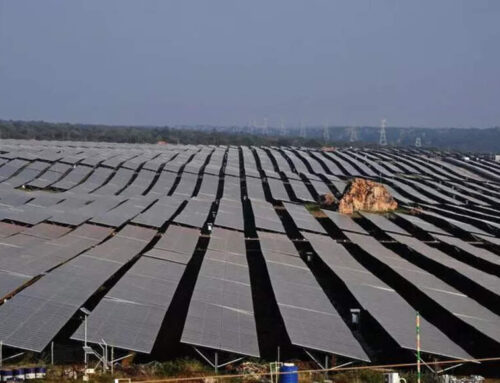Tesla’s (TSLA stock) $557M Shanghai Megapack Project: Powering China’s Clean Energy Future
June 23, 2025
China’s Urgent Push for Grid-Scale Battery Power
China has rapidly scaled up its energy storage infrastructure. In 2024, the country added 37 GW / 91 GWh of battery storage capacity—more than twice its 2023 output—bringing cumulative capacity to 62 GW / 141 GWh.
About 75% of new installations were large utility-scale systems over 100 MW. This shows a strong move toward grid-level assets that help renewable energy grow.
Globally, battery storage is also booming. BloombergNEF forecasts 137 GW / 442 GWh of annual deployments by 2030—an annual growth rate of 21% from 2024 levels. China alone is projected to account for around 40% of that growth, driven by co-located storage mandates alongside solar and wind.

The International Energy Agency (IEA) further emphasizes that global storage needs must reach 1,200 GW by 2030 to stay aligned with Net‑Zero 2050 goals. This includes a substantial increase in battery storage, aiming for a 15-fold increase from current levels.
Tesla Energy: Breaking Records, Charging Ahead
Tesla’s energy division has seen explosive growth. In Q1 2025 alone, Tesla deployed 10.4 GWh of energy storage—156% more than Q1 2024—building on the record 31.4 GWh deployed in 2024, which doubled the previous year’s total.
Financially, this segment has become one of Tesla’s strongest: Energy storage revenues hit $10.1 billion in 2024 with a 26% gross margin.


Tesla is naming projects like California’s Lathrop, Nevada, Texas, and now Shanghai. This shows that they want to make their Megapack line a global backbone for grid-scale energy services.
The Tech Behind Tesla’s Grid Solution
Tesla’s Megapack system combines large lithium-ion batteries, power electronics, and cooling systems in one container. It usually provides about 3.9 MWh of storage, which can power around 3,600 homes for one hour. The scalable design supports projects from a few megawatts to hundreds of megawatts. This makes it great for grid backup, frequency regulation, and peak shaving.
Most Megapacks in China will use lithium iron phosphate (LFP) cells—the industry’s lowest-cost and most durable lithium chemistry—reflecting broader trends in battery cost reductions. In China, turnkey system prices dropped to just $115/kWh by early 2024—a 43% drop from the prior year .
ESG Impact and Grid Modernization
The Shanghai project strengthens Tesla’s presence in China’s clean‑energy sector amid ongoing US‑China tensions. It also signals Tesla’s evolution into an energy-infrastructure provider, offering grid services beyond EV charging.
From an ESG standpoint, battery storage supports China’s decarbonization goals by reducing reliance on coal-fired generation and decreasing peak emissions. This aligns with national targets of carbon peaking by 2030 and full neutrality by 2060.
Global Storage Surge: The Battery Boom Explained
The global energy storage sector is growing fast. This growth is due to the shift to renewables and the need for grid stability. In 2024, battery storage installations grew rapidly, while estimates show a 75% increase in deployed megawatt-hours compared to the previous year.

Projections indicate the sector will exceed one terawatt-hour by 2030. This rapid growth comes from a few key factors:
- The rise of renewable energy sources that are not always consistent,
- Government policies are very supportive, and
- The cost of lithium-ion batteries has dropped dramatically, hitting a record low of $115/kWh in 2024.
Asia, particularly China, remains the epicenter of this growth. In 2024, China added over 42 GW / 101 GWh of battery storage (not counting pumped hydro). Its total capacity is now much larger than that of most other regions.


The United States is also setting records in 2024. It has installed 12.3 GW and 37.1 GWh of new capacity across all sectors. This is a 33% increase in capacity and a 34% rise in energy storage compared to 2023. Texas and California still lead the way, but new markets like New Mexico, Oregon, and Arizona are growing fast.
Meanwhile, Europe is increasing storage deployments. This is in response to policy mandates from Germany, the UK, and Spain. It also aims to boost energy security due to geopolitical uncertainty.
Financially, the sector is attracting robust investment. BloombergNEF expects annual spending to reach nearly $93 billion in the next 10 years.
-
The market size was over $20 billion in 2024. It is expected to reach more than $100 billion by 2037, and Asia Pacific will make up about $35 billion of that.
Despite this bullish outlook, the industry faces challenges. Trade policy shifts and new safety regulations, particularly in the U.S. and Europe, could introduce near-term uncertainty and increase costs.
However, these developments may also drive domestic manufacturing and safer, more reliable products. Utilities and developers are changing their procurement strategies. They want to handle supply chain risks and regulatory changes.
Despite these challenges, the future looks bright. Storage is now seen as a key part of strong, modern power systems.
What This Means for Tesla and Grid Tech
By focusing on megaprojects, Tesla looks to scale storage into the terawatt range in the years ahead . Analysts expect Tesla’s energy business will become increasingly central to its market value, potentially accounting for 14% of the company’s valuation, surpassing segments like solar or automotive accessories .
Tesla’s expansion aligns with global policy shifts—like China’s energy storage co-location mandates, the U.S.’s Inflation Reduction Act, and other subsidies—driving urgency in grid modernization. Mission-critical projects like Shanghai’s Megapack station show how battery technology is moving from an EV accessory to a cornerstone of national energy strategies.
Tesla’s $557 million Shanghai Megapack project is both a symbol and a strategy. It shows the global need for storage and local goals for energy stability. It also marks Tesla’s shift into a power infrastructure company.
As China presses on with renewable expansion and global storage deployment advances rapidly, projects like this will play a critical role in decarbonizing power systems. Tesla is not just providing power—it’s architecting the grid of the future.
Search
RECENT PRESS RELEASES
Related Post




